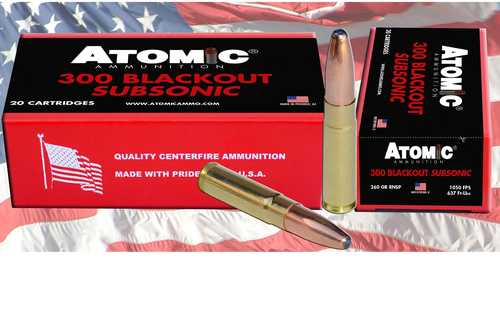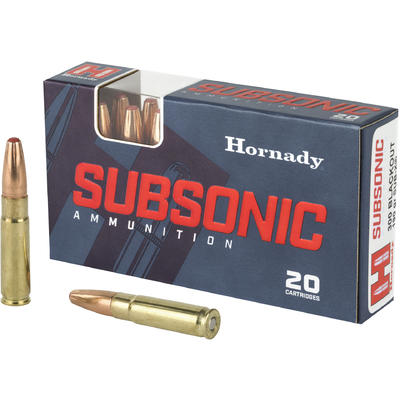

We’ll go over some of the pros and cons of each kind. Choosing subsonic or supersonic ammo is no different. Like all things in life, there are advantages and disadvantages to every choice we make. Advantages and Disadvantages of Using Subsonic vs. This ammo-and-can combo will keep your shooting noise to as much of a minimum as possible.
#300 blackout subsonic ammo db level crack#
First, you eliminate the sonic crack altogether, and the suppressor is also able to better mitigate the expansion of the gases in these rounds, resulting in even less sound. Most of the time, the purpose of using subsonic ammo is to keep your sound signature to an absolute minimum when shooting with a suppressor.

You still hear the round being fired, but you will not hear a supersonic crack because it is nonexistent with this caliber. It is inherently subsonic due to its relatively heavy projectile that keeps its speed below 1,100 feet per second. If your bullet is traveling slower than the speed of sound (1,100fps), then it won’t break the sound barrier and produce the sonic crack associated with traditional gunfire. That slower speed is the key to the effectiveness of subsonic ammo. This serves two purposes: it retains more energy while also slowing the bullet’s speed. Subsonic ammo of any caliber is usually going to be loaded with a heavier projectile. What is Subsonic Ammo and How Does it Work? That distinctive “crack” from a gunshot is inherently present in all but a very few off-the-shelf, run-of-the-mill caliber loads. Whether you knew it or not, supersonic ammo probably makes up almost, if not all, of the ammo you’ve ever shot before. As a result, it does not break the sound barrier, so it won’t make that distinctive crack. This is because a subsonic bullet is traveling slower than the speed of sound. *NO CRACK* When you shoot subsonic ammo, you won’t hear the same crack as you do with supersonic ammo. When it breaks the sound barrier, you hear that sonic crack. This is because supersonic ammo is propelling the bullet faster than the speed of sound. *CRACK* Each and every time you pull the trigger on supersonic ammo, you hear that sound. We 'expect' a gunshot to be loud, and when a silencer is attached, the reduction in SPL leads us to believe that the sound is 'quieter' than it is.If you’ve spent any amount of time shooting, you’ve probably heard the terms “subsonic” and “supersonic” mentioned before – especially if you’ve spent any time shooting with a suppressor.īut what, exactly, do these terms mean? Where did they come from? And, most importantly, why do they matter? We’ll cover all of that in this article! A Rundown of Subsonic and Supersonic Ammo Keep in mind that perception affects us as well. Silencers, when used on small caliber weapons can reduce sound pressure levels enough to be considered 'hearing safe' but should only be tolerated for a short time. Your hearing can be damaged by 8 hours of exposure to 90dB, but can tolerate 120dB for short periods. That's why a 150dB impulsive sound like a gunshot can be immediately damaging and immediately painful, and one that measures 30dB less can be more easily tolerated. So when a silencer reduces the measured sound level by 30dB, it's reducing the sound pressure (amplitude) by a factor of 1,000. And a sound that is 100,000 times as intense is 50dB above the threshold. A sound that is 100 times more intense is 20dB above the threshold. higher amplitude) is 10dB above that threshold.

A sound that is 10 times more intense (i.e. The dB scale by which all sound is measured is logarithmic, and is referenced to the lower threshold of human hearing. SPL (Sound Pressure Level) is what concerns us here.


 0 kommentar(er)
0 kommentar(er)
